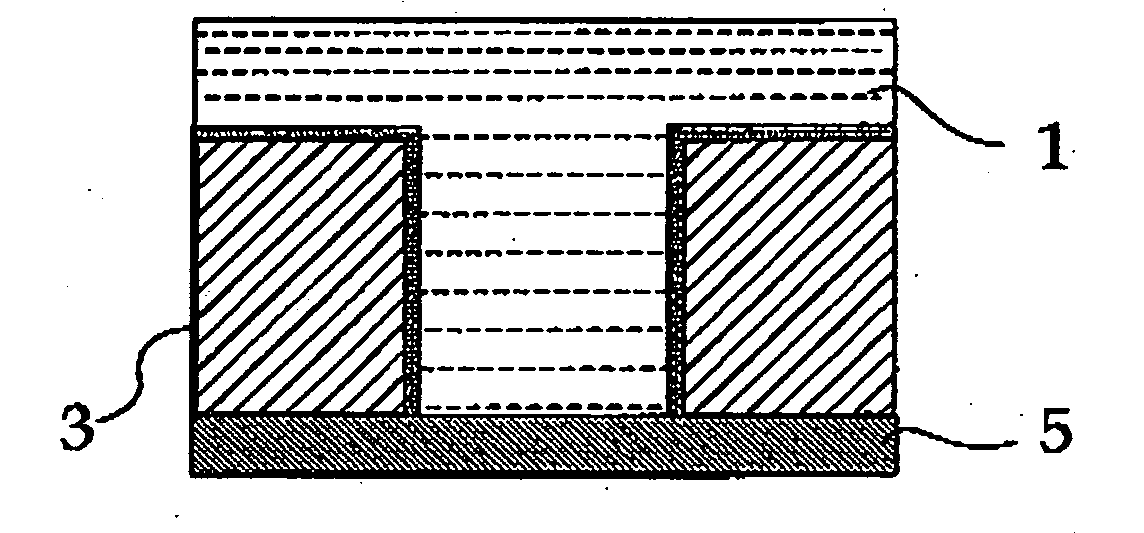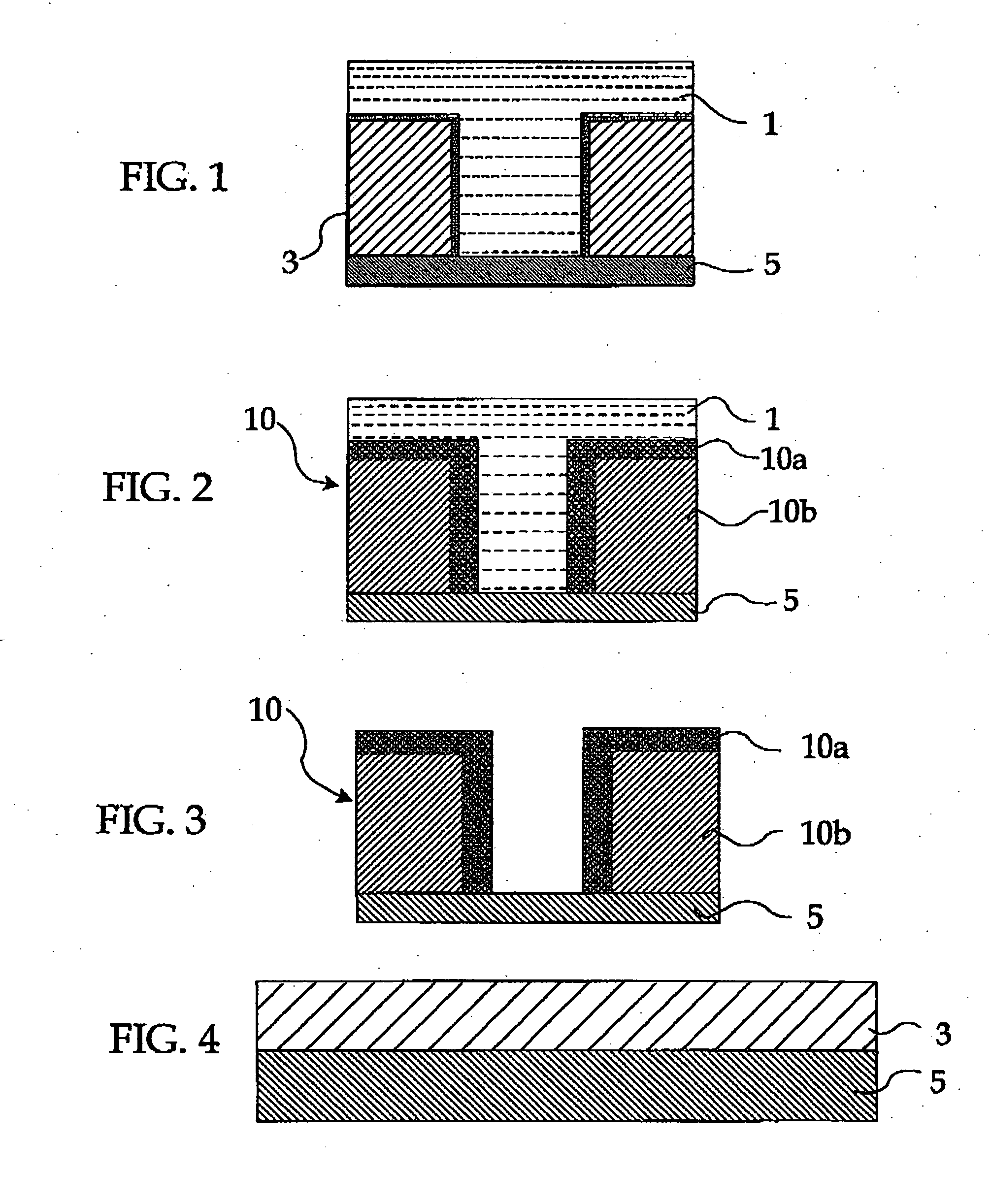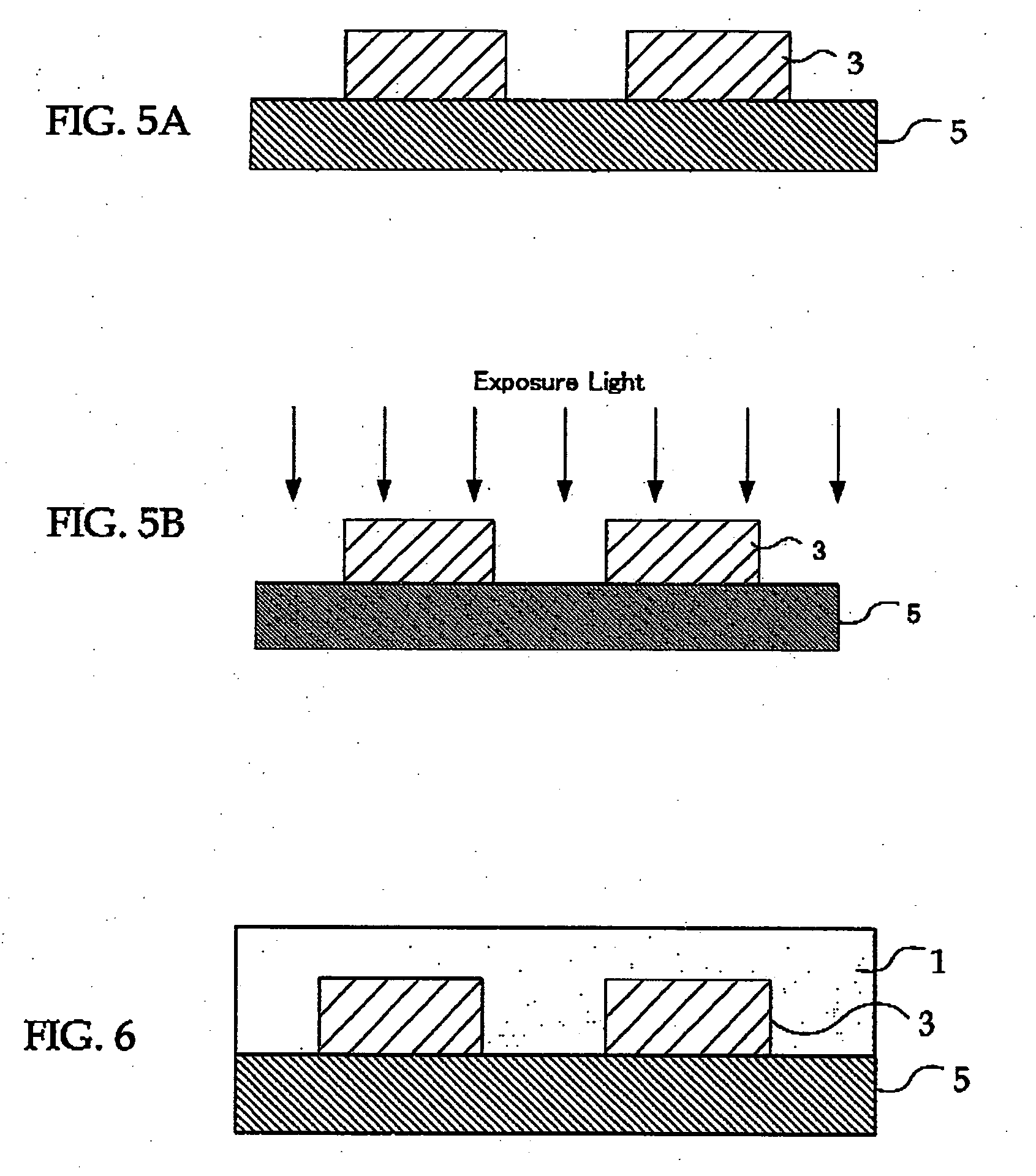Resist pattern thickening material and process for forming resist pattern, and semiconductor device and process for manufacturing the same
a technology of resist pattern and thickening material, which is applied in the direction of photosensitive materials, photosensitive materials auxiliaries/base layers, instruments, etc., can solve the problem of inability to thicken resist pattern without utilizing residual acid, and achieve uniform thickening effect, efficient thickening, and fine structure
- Summary
- Abstract
- Description
- Claims
- Application Information
AI Technical Summary
Benefits of technology
Problems solved by technology
Method used
Image
Examples
example 1
Preparation of Resist Pattern Thickening Material
[0237] Resist pattern thickening materials A through T having the compositions shown in Table 1 were prepared.
[0238] Note that, in Table 1, the “thickening material” means a resist pattern thickening material, and “A” through “T” correspond to the resist pattern thickening materials A through T. Of the resist pattern thickening materials A through T, the resist pattern thickening materials A, B, and P correspond to comparative example and the resist pattern thickening materials C to O and Q to T correspond to examples (of the present invention). Note that, in Table 1, the unit of the values in parentheses is parts by mass.
[0239] In the “compound represented by the general formula (1)” column of resist pattern thickening materials C to O and Q to T, benzyl alcohol, benzylamine, and a derivative thereof are compounds represented by the following general formula (1).
[0240] In the general formula (1), “X” is a functional group repre...
example 2
Preparation of Resist Pattern Thickening Material
[0262] Resist pattern thickening materials 2A through 2D having the composition shown in Table 7 were prepared.
[0263] In Table 7, “thickening material” means a resist pattern thickening material, and “2A” through “2D” correspond to the resist pattern thickening materials 2A through 2D. In Table 7, the unit of the values in parentheses is parts by mass.
[0264] In the “compound represented by general formula (1)” column of the resist pattern thickening materials 2A through 2D, derivatives of benzyl alcohol are compounds represented by the above-mentioned general formula (1).
[0265] In the “resin” column, “PVA” is a polyvinyl alcohol resin (“PVA-205C” manufactured by Kuraray Co., Ltd.). In the “surfactant” column, “TN-80” is a non-ionic surfactant (a primary alcohol ethoxylate surfactant manufactured by Asahi Denka Co., Ltd.), and “PC-6” is a non-ionic surfactant (a polynuclear phenol ethoxylate surfactant manufactured by Asahi Denka ...
example 3
Preparation of Resist Pattern Thickening Material
[0273] Resist pattern thickening materials 3A through 3E having the compositions shown in Table 10 were prepared.
[0274] Note that, in Table 10, the thickening material” means a resist pattern thickening material, and “3A” through “3E” correspond to the resist pattern thickening materials 3A through 3E. Note that, in Table 10, the unit of the values in parentheses is parts by mass.
[0275] In the “compound represented by the general formula (1)” column of the resist pattern thickening materials 3A through 3E, derivatives of benzyl alcohol are compounds represented by the above-mentioned general formula (1).
[0276] In the “resin” columns “PVA” is a polyvinyl alcohol resin (“PVA-205C” manufactured by Kuraray Co., Ltd.) and “KW-3” is a polyvinyl acetal resin (manufactured by Sekisui Chemical Co., Ltd.). In the “surfactant” column, “PC-6” is a non-ionic surfactant (a polynuclear phenol ethoxylate surfactant manufactured by Asahi Denka Co...
PUM
| Property | Measurement | Unit |
|---|---|---|
| wavelength | aaaaa | aaaaa |
| wavelength | aaaaa | aaaaa |
| temperature | aaaaa | aaaaa |
Abstract
Description
Claims
Application Information
 Login to View More
Login to View More - R&D
- Intellectual Property
- Life Sciences
- Materials
- Tech Scout
- Unparalleled Data Quality
- Higher Quality Content
- 60% Fewer Hallucinations
Browse by: Latest US Patents, China's latest patents, Technical Efficacy Thesaurus, Application Domain, Technology Topic, Popular Technical Reports.
© 2025 PatSnap. All rights reserved.Legal|Privacy policy|Modern Slavery Act Transparency Statement|Sitemap|About US| Contact US: help@patsnap.com



